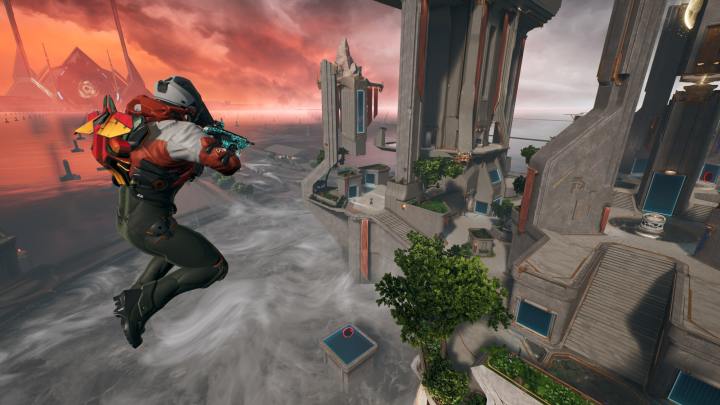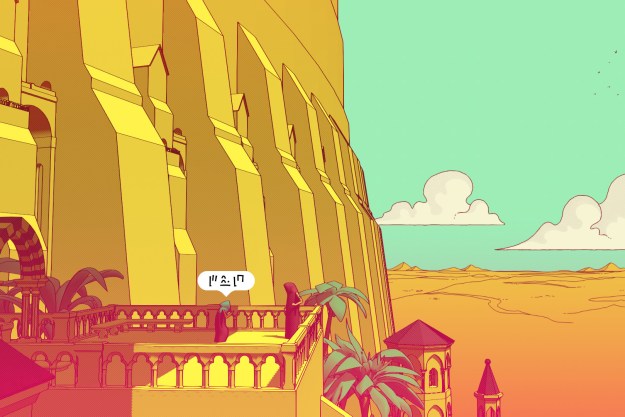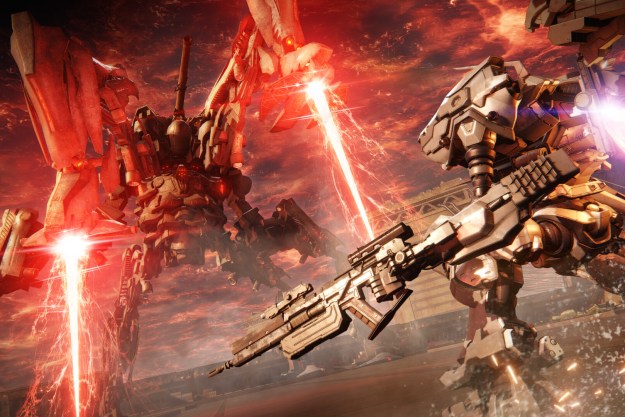Halo Infinite isn’t the only shooter that’s getting a second season this spring. Splitgate Season 2 starts tomorrow and it looks to regain some momentum with new modes, cosmetics, and visual upgrades. It’s a well-timed update, as its larger peers struggle to keep fans hooked. Halo Infinite’s Lone Wolves season has been widely criticized for its lack of new content, while Battlefield 2042 is removing one of its few modes entirely. By comparison, Splitgate’s new update is exciting, bringing some fun new ideas to the portal-based shooter.
I went hands-on with this season’s new content, trying out all three of the game’s upcoming modes: Lockdown, Hot Zone, and Juggernaut. Each one is a welcome addition to the game’s growing roster of playlists, which continues to show that developer 1047 Games is committed to its long-term plan to transform the indie into a “AAA” shooter.
Hold those zones
Of the three new modes, two of them revolve around capturing zones. The pace of each is very different, though. First, I jump into a round of Hot Zone, a mode that features one rotating “hill” that players need to capture and defend to earn points. It’s a fairly standard zone control mode that moves the action around the map, but it’s an especially clean fit with Splitgate’s unique portal feature.

With shootouts forming around one specific space at a time, I’m rewarded any time I stop and think about the layout of the room rather than running in guns blazing. At one point, I see my teammates standing in a narrow hallway shooting into the much more open room that the enemy team has control of. My teammates are sitting ducks with way less room to move around. Instead of running in behind that, I poke my head out to drop a portal on the wall behind the zone and sneak in, allowing us to pincer them.
Splitgate’s strength has always been the ways that its portals help break standard shooter stalemates, and Hot Zone allows for the most strategic use of the mechanic yet. And while it’s still fast-paced, the emphasis on teamwork makes the action easier to parse from an esports spectator’s perspective.
Lockdown, on the other hand, is a lightning-fast endurance test. In this mode, three zones that teams need to capture appear on the map. However, players only get a point when they lock down all three at once. As a result, players need to move fast, making sure to stay aggressive and push their momentum. Since portals allow players to zip around the map with ease, zone control constantly changes. A badly timed death or poor spatial awareness could result in a lockdown (very few points are required to win, so each one is essential).

I felt out of breath by the end of my match. I kept bouncing between points, quickly dropping well-placed portals to get me across the map faster. My foot was always on the gas pedal as the advantage seesawed between the two teams. The emphasis almost feels more on movement than shooting here, giving matches a speedrun-like thrill.
VIP section
Of the new modes, Juggernaut has the most fun with the Splitgate formula. It’s essentially a spin on the classic VIP concept where one player starts the match with increased health and movement speed and everyone else must work together to kill them. The person who gets the killing blow becomes the next juggernaut and they must survive as long as possible to accumulate points. While the juggernaut is more powerful, they do have one major disadvantage: They can’t create portals.
It’s a simple wrinkle, but one that finds a clever way to make the VIP idea work for Splitgate. It turns shootouts into a battle of brains versus brawn as the juggernaut struggles to outmuscle weaker opponents who can swarm them from all angles. It also plays well with the game’s usual fast-paced chaos. Every time a juggernaut died at the hands of four players, there was a sudden scramble as everyone turned to look around and figure out who got the last shot, resulting in a Tom and Jerry-like scramble around the map via jetpacks and portals.

Each mode serves as a reminder of why Splitgate is one of the best, if not overlooked, shooters on the market today. Its portal system isn’t a one-trick gimmick; it’s a powerful tool that turns the pace and strategic potential of a normal shooter on its head. In each mode, I felt like I was using portals in completely different ways, whether it be to create shortcuts to objectives, break up stalemates, or get the jump on my more powerful enemy.
The season 2 update is part of 1047’s push to make Splitgate feel more like a “AAA” game, an effort that’s involved retooling the game’s visuals on the fly. In addition to the modes, the new season brings an updated Abyss map, improved matchmaking, the ability to share custom maps via a code, and more. Some of those tweaks are more fundamental than others, but all of them show that Splitgate is a flexible project that can keep up in the crowded sea of constantly updating shooters.
If you previously saw Splitgate as an appetizer to Halo Infinite’s main course, you might want to consider going back for seconds. You might find that the hors d’oeuvres are more filling now.
Splitgate season 2 begins on June 2.
Editors' Recommendations
- A busy 2023 wasn’t enough to pull me away from my go-to mobile game
- Half-Life 2 is getting Nvidia’s RTX treatment with DLSS 3
- Hot Wheels Unleashed 2 — Turbocharged is a shockingly ambitious sequel
- Super Mario Bros. Wonder brings the series back to 2D this October
- You have to try these two climbing game demos during Steam Next Fest





